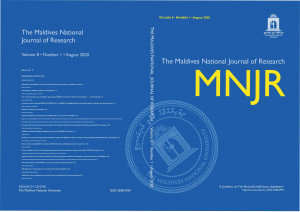Using qualitative data analysis tools ‘fit for purpose’ for making sense of teacher educators’ use of digital technologies in their pedagogical practices
DOI:
https://doi.org/10.62338/7pt1y337Keywords:
Qualitative data analysis tools, Teacher educators, it for purpose, digital technologies, padagogical practicesAbstract
This article describes the analysis process associated with an ethnographic study in which data were generated through interviews, observations, focus groups and hanging out techniques. The purpose of the study was to make sense of how teacher educators’ specific technological and pedagogical practices were formed, with particular focus on the possible influence of their culture. The researcher used various analysis strategies involving the integration of a number of digital data tools (NVivo-10, Mindjet, Inspiration-8-IE, and Microsoft applications) that served different purposes at different times. The article argues that researchers should consider using an integration of different digital tools, applying them as ‘fit for purpose’ at various times during data analysis. It suggests doing this will assist researchers to seek a deeper understanding of qualitative data and manage the ‘messiness’ of analysis, while assisting with the complexity of the meaning making process.
References
Auerbach, C. F., & Silverstein, L. B. (2003). Qualitative data: An introduction to coding and analysis. New York, NY: NYU press
Basit, T. (2003). Manual or electronic? The role of coding in qualitative data analysis. Educational Research, 45(2), 143-154. doi:10.1080/0013188032000133548.
Bazeley, P., & Jackson, K. (2013). Qualitative data analysis with NVivo (2nd ed.). London, England: Sage.
Bloor, M., & Wood, F. (2006). Keywords in qualitative methods: A vocabulary of research concepts. London, England: Sage.
Charmaz, K. (2008). Reconstructing grounded theory. In P. Alasuutari, L. Bickman & J. Brannen (Eds.), The Sage handbook of social research methods (pp. 461-478). Los Angeles, CA: Sage. Creswell, J. W. (2007). Qualitative inquiry and research design: Choosing among five approaches (2nd ed.). London, England: Sage.
Denzin, N. K., & Lincoln, Y. S. (2011). The Sage handbook of qualitative research (4th ed.). Thousand Oaks, CA: Sage.
Dey, I. (2003). Qualitative data analysis: A user friendly guide for social scientists. London, England: Routledge.
Edwards-Jones, A. (2014). Qualitative data analysis with NVIVO. Journal of Education for Teaching, 40(2), 193-195.
García‐Horta, J. B., & Guerra‐Ramos, M. T. (2009). The use of CAQDAS in educational research: some advantages, limitations and potential risks. International Journal of Research & Method in Education, 32(2), 151-165.
doi:10.1080/17437270902946686.
Gasaway, B. M., Elder, W. L., & Campbell, J. (1984). Word processors for qualitative Sociologists: A Review Essay. Qualitative Sociology, 7(1/2), 157.
Glaser, B. G., & Strauss, A. L. (1967). The discovery of grounded theory: Strategies for qualitative research. Chicago, IL: Aldine Pub. Co.
Grbich, C. (2013). Qualitative data analysis: An introduction (2nd ed.). London, England: Sage.
Harding, J. (2013). Qualitative data analysis from start to finish. Thousand Oaks, CA: Sage.
James, A. (2013). Seeking the analytic imagination: reflections on the process of interpreting qualitative data. Qualitative Research, 13(5), 562-577. doi:10.1177/1468794112446108.
Kelle, U., Prein, G., & Bird, K. (1995). Computer-aided qualitative data analysis: Theory, methods and practice. Thousand Oaks, CA: Sage.
Leech, N. L., & Onwuegbuzie, A. J. (2011). Beyond constant comparison qualitativethe compatibility of technology with qualitative data analysis. Forum Qualitative Sozialforschung/Forum: Qualitative Social Research, 3(2)
Seidel, J. (1998). Qualitative data analysis. Retrieved from ftp://ftp.qualisresearch.com/pub/qda.pdf.
Strauss, A. L. (1987). Qualitative analysis for social scientists. New York,NY: Cambridge University Press.
Weitzman, E. A. (2000). Qualitative research. Thousand Oaks, CA: Sage Publication.
Welsh, E. (2002). Dealing with data: Using NVivo in the qualitative data analysis process Forum: Qualitative social research, 3(2)



